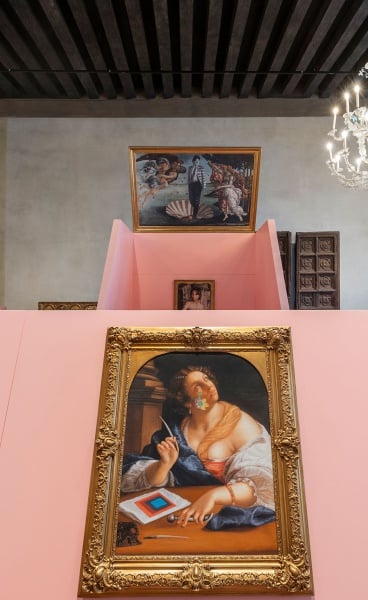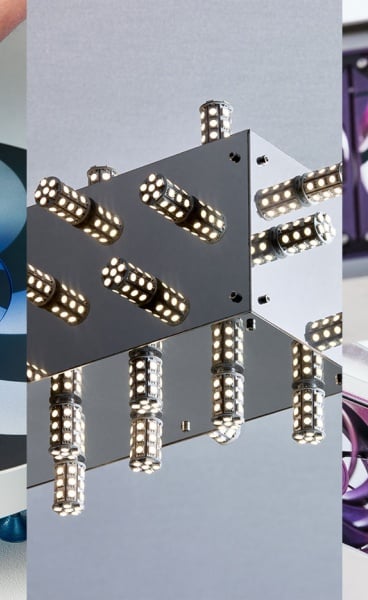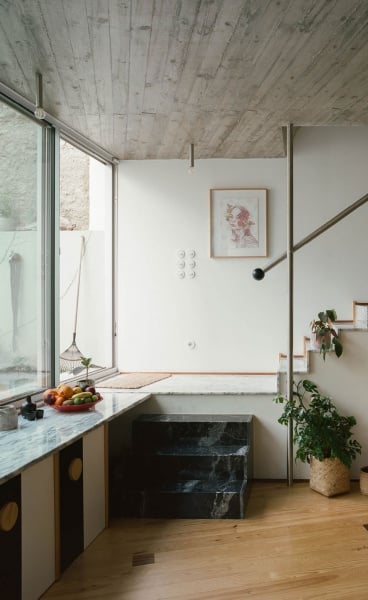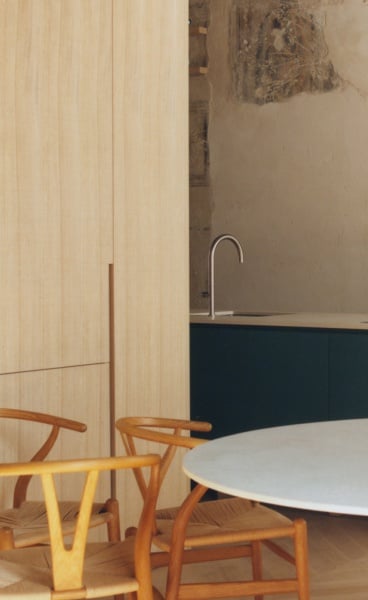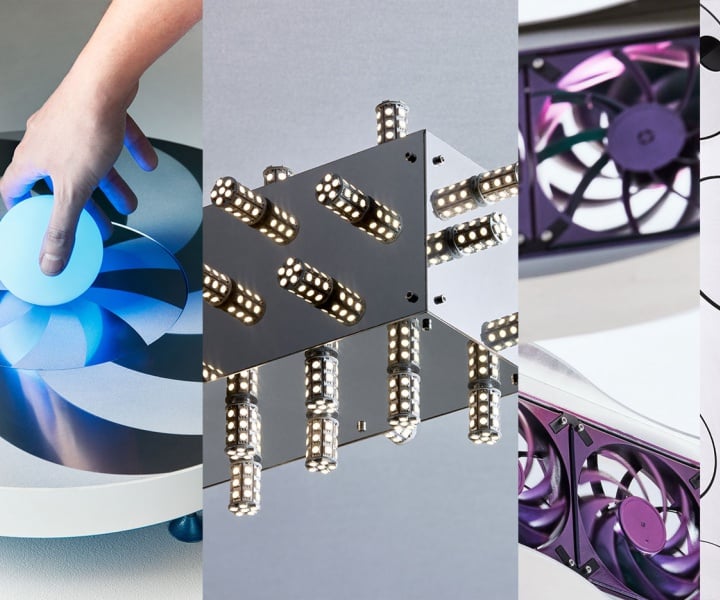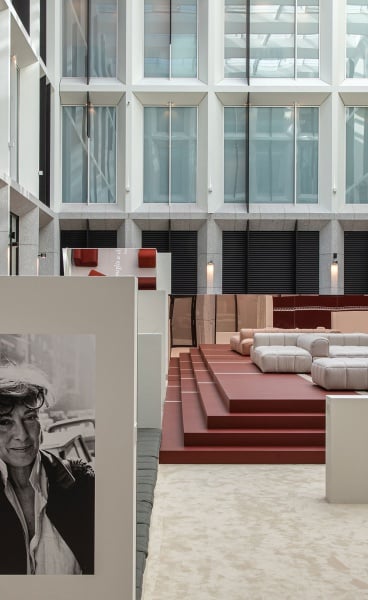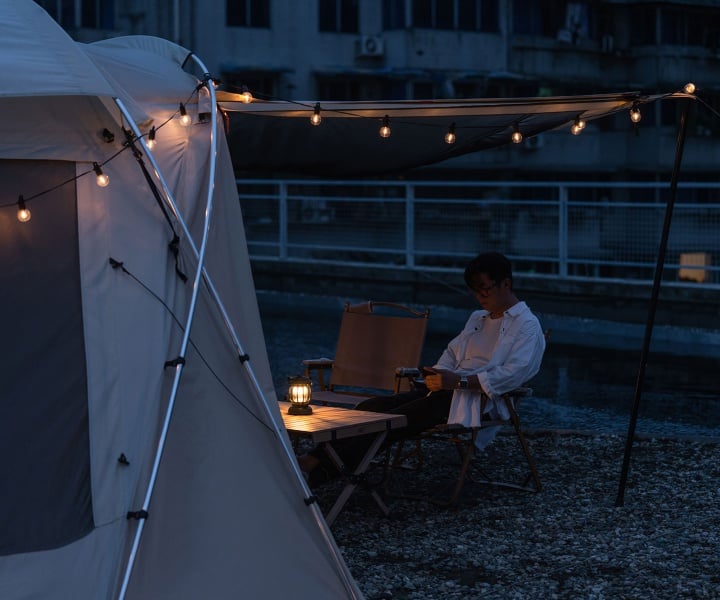Title
EXITPosted In
InstallationDuration
07 March 2020 to 30 August 2020Venue
S.M.A.K.Opening Hours
Tue–Fri 9:30 a.m.–5:30 p.m., Sat & Sun 10 a.m.–6 p.m.Location
Telephone
+32 (0)9 323 60 01| Detailed Information | |||||
|---|---|---|---|---|---|
| Title | EXIT | Posted In | Installation | Duration | 07 March 2020 to 30 August 2020 |
| Venue | S.M.A.K. | Opening Hours | Tue–Fri 9:30 a.m.–5:30 p.m., Sat & Sun 10 a.m.–6 p.m. | Location |
1 Jan Hoetplein 9000 Gent
Belgium |
| Telephone | +32 (0)9 323 60 01 | ||||
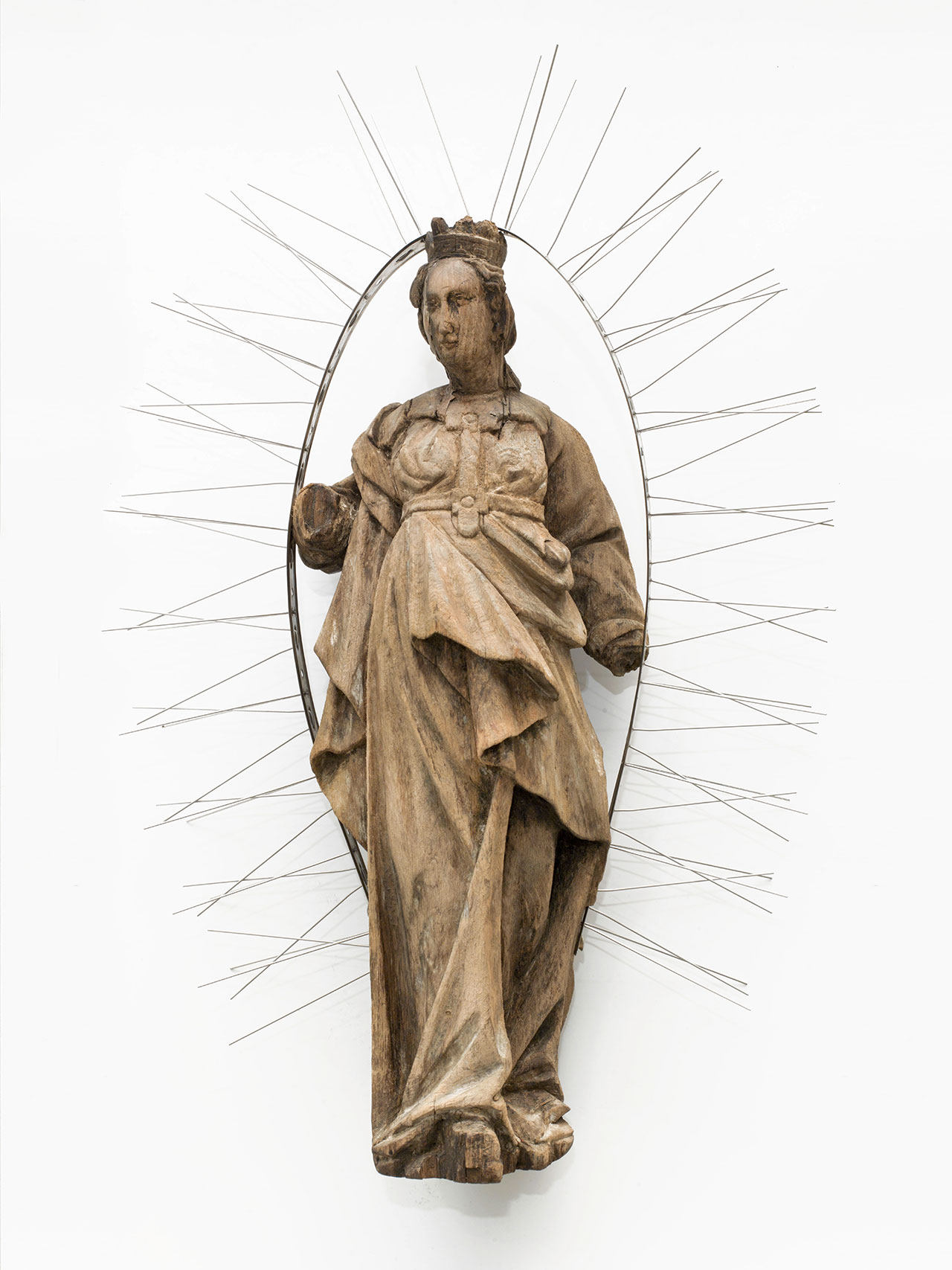
Kris Martin, Annunciata, 2016. Oakwood, metal. Private collection, Germany. Courtesy Kris Martin and König Galerie. Photo Roman März.
Artist's statement: A halo of pigeon spikes surrounds a 17th-century Madonna and seems to scare off the angels.
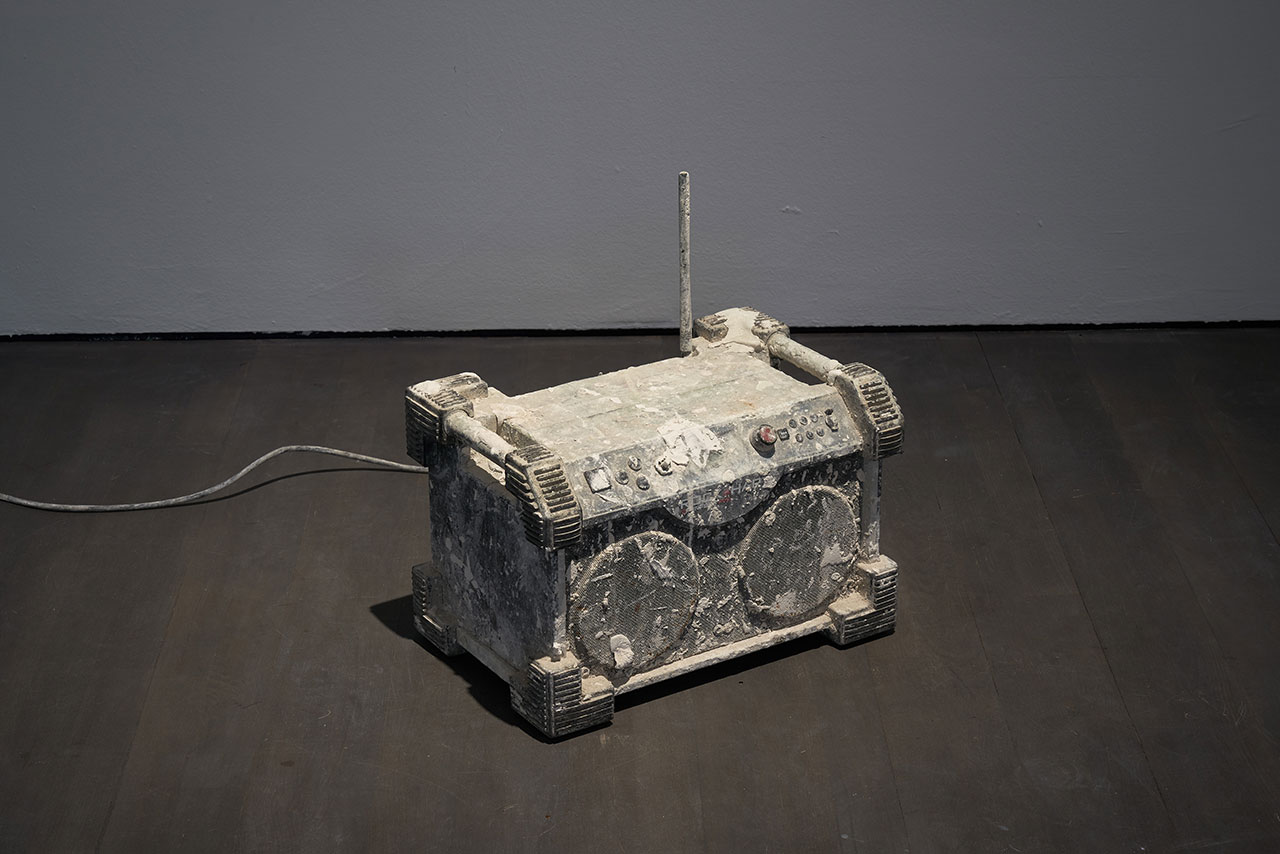
Installation view. Kris Martin, EXIT at S.M.A.K., Ghent, 2020. Photo by Dirk Pauwels.
Featured: Miserere, 2016. Radio, plaster, electronic units. König Galerie, Berlin/London/Tokyo.
Artist's statement: A robust radio from a building site, which typically blasts loud music, emits an almost inaudible version of Allegri’s Miserere."
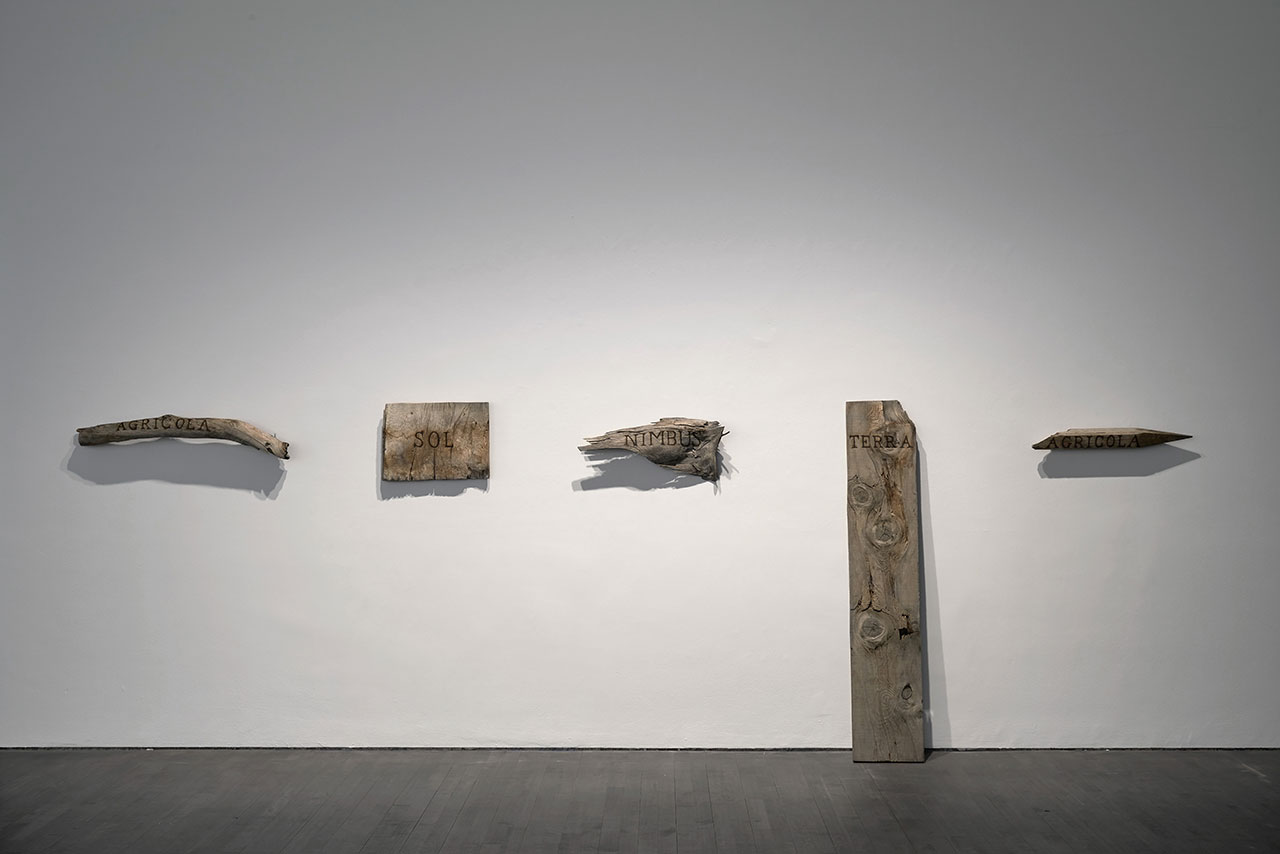
Installation view. Kris Martin, EXIT at S.M.A.K., Ghent, 2020. Photo by Dirk Pauwels.
Feaured: Sol, 2006. Sunlight on wood. Collection Mimi & Filiep Libeert, Belgium.
Artist's statement: An ancient Asian folk tale tells of a farmer who wants to become the sun because it burns him. When a cloud then blocks its rays, the sun wants to become a cloud. In an act
of hubris, the cloud unleashes a deluge, and the earth below begins to blossom and flourish. In his lust for power, he then wants to become the earth. Until a peasant tears up the soil with a plough, which then makes him want to become a farmer again.
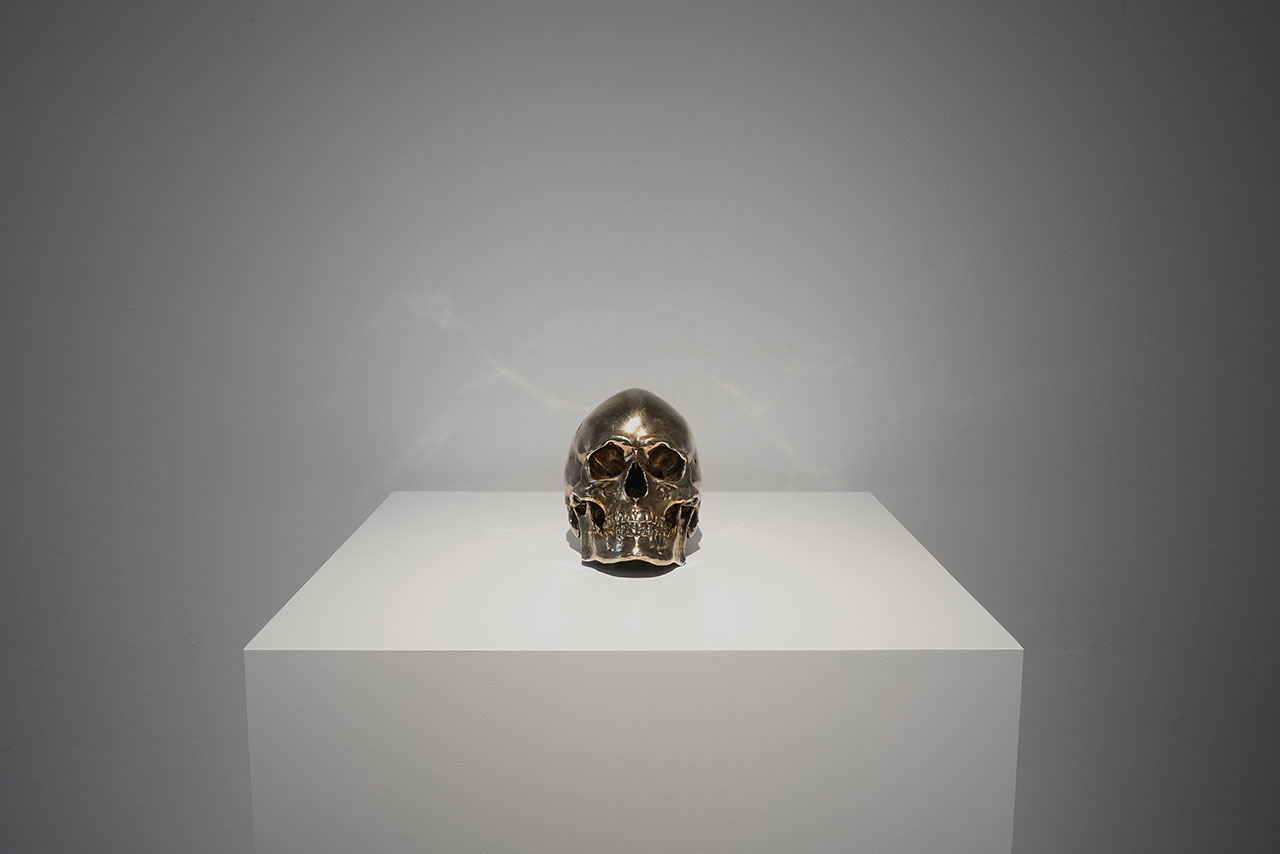
Installation view. Kris Martin, EXIT at S.M.A.K., Ghent, 2020. Photo by Dirk Pauwels.
Featured: Still Alive, 2005. Bronze, silver-plated. Courtesy of the artist.
Artist's statement: I had my skull scanned, plotted, cast and silvered. It’s the first skull of a living human being in art history.
Perhaps the work that most fittingly encapsulates Martin’s subversive ethos and conceptual rigour is “Idiot”, a 1496-page long, hand-written copy of The Idiot by Fyodor Dostoevsky where the name of the book’s hero, Myshkin, is substituted by the artist’s own name. Taking several months to replicate, the artist in effect emulated Myshkin’s quest for spiritual transformation casting himself literarily and literaly as the idiot.
Martin’s critical eye and keen humour are in full display in his “Mandi” sculpture series whose name comes from a colloquial Italian term for goodbye. “Mandi III” is a blank train arrivals-and-departures board that turns over endlessly without offering any information, “Mandi XV” is a larger-than-life medieval cruciform sword, while “Mandi VIII” is a replica of one of the most famous ancient sculptures, namely Laocoön and His Sons, albeit with the attacking sea serpents missing, an omission that asks viewers to fill in what the three figures are fighting against.
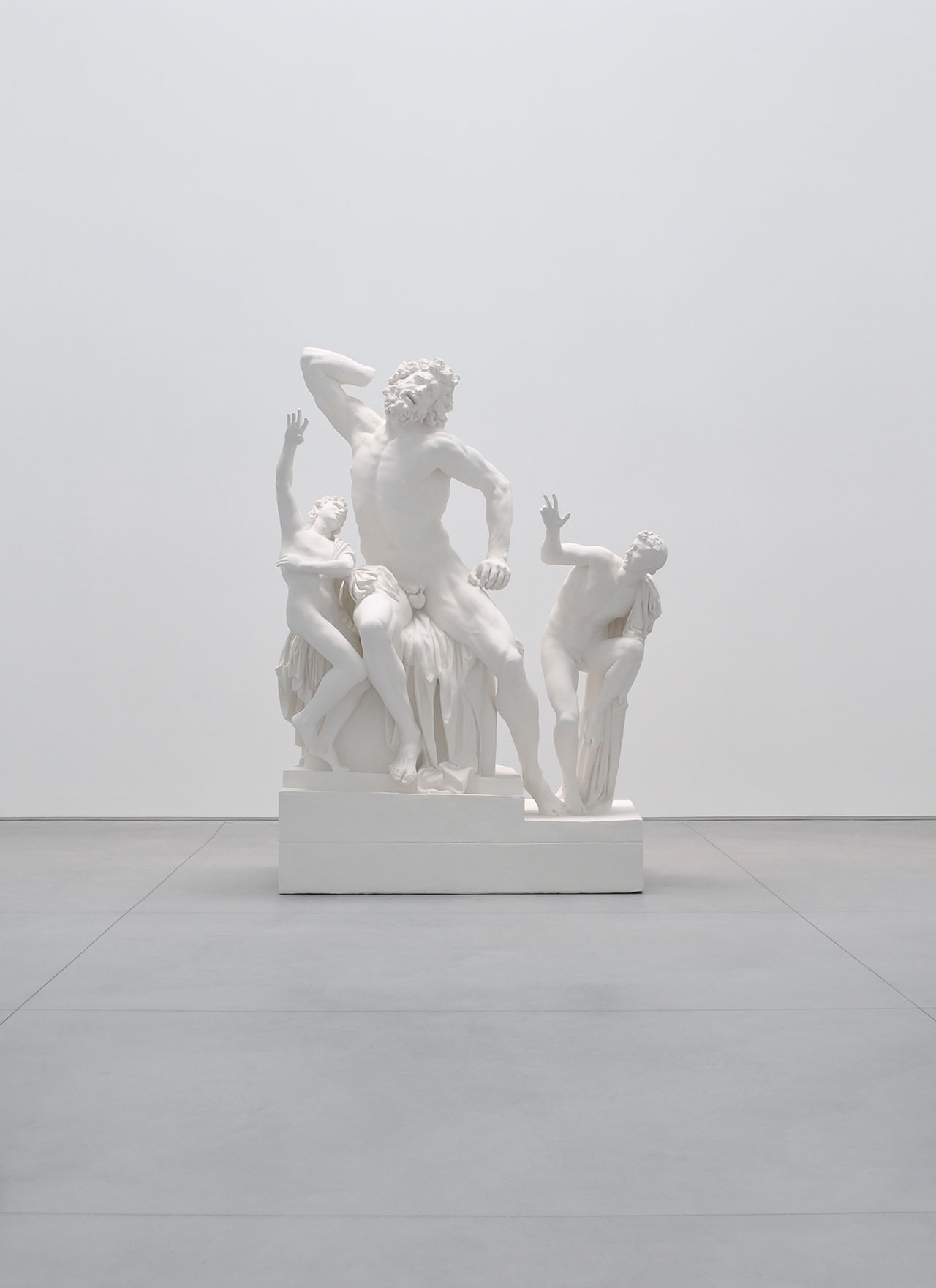
Kris Martin, Mandi VIII, 2006. Courtesy Kris Martin. Installation view The Warehouse. Photo by Sara Deal.
Artist's statement: Without the two snakes, Laocoön’s fear and that of his sons is inexplicable. The cause of their terror has disappeared but the emotion can still be read in their faces and body language.
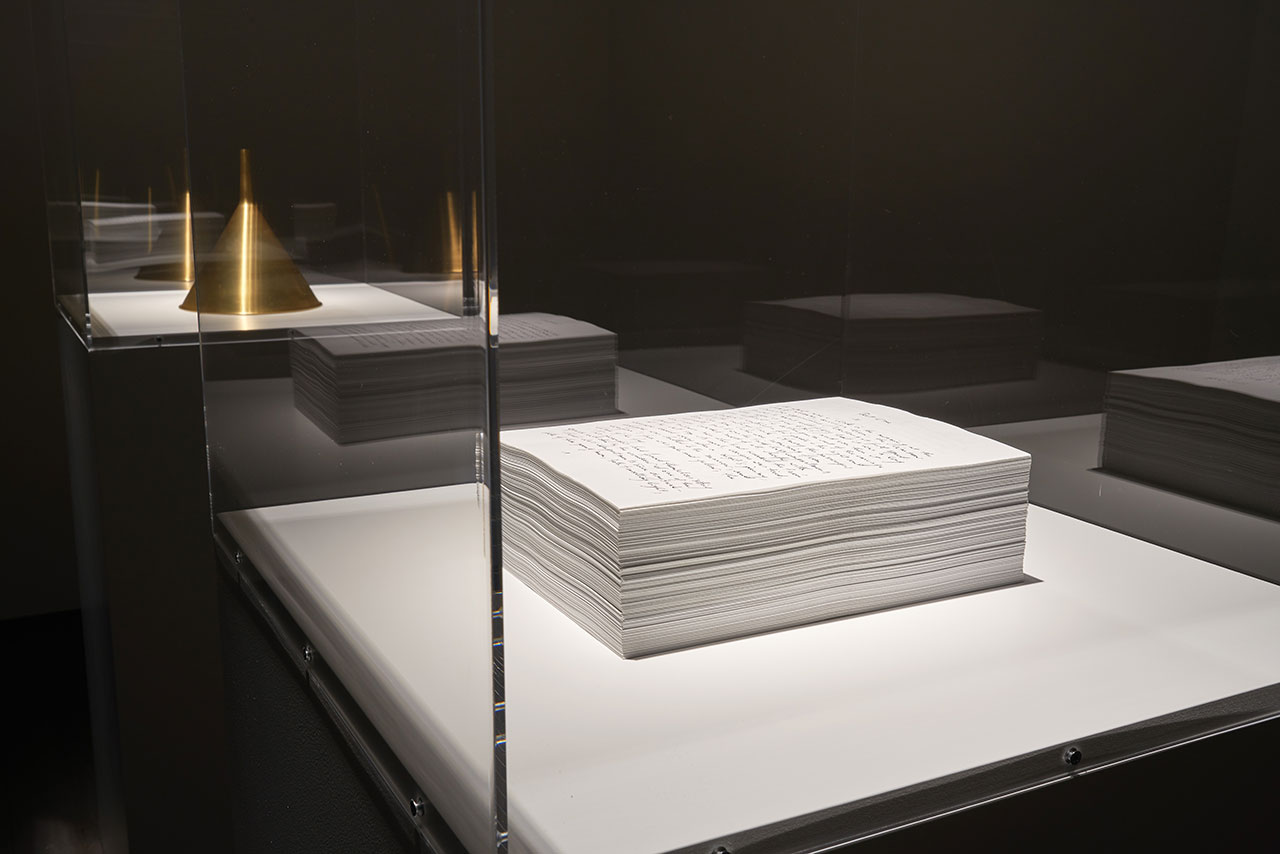
Installation view. Kris Martin, EXIT at S.M.A.K., Ghent, 2020. Photo by Dirk Pauwels.
Featured: Idiot, 2005. Ink on paper, 1494 pages.
Artist's statement: Like a monk, I copied The Idiot by F. Dostoevsky. In so doing, I replaced the name of the protagonist Myshkin with Martin and became the idiot myself.
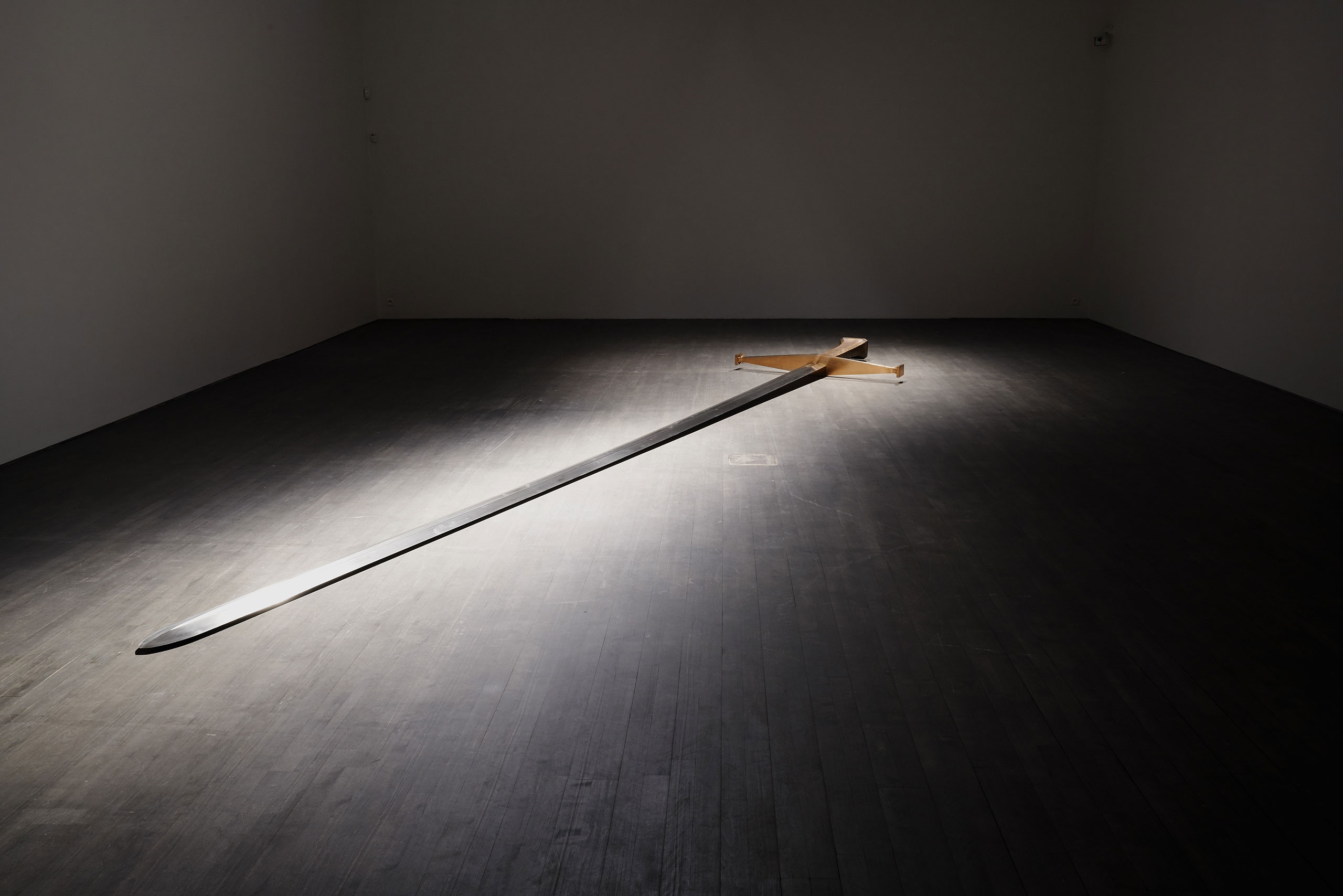
Installation view. Kris Martin, EXIT at S.M.A.K., Ghent, 2020. Photo by Dirk Pauwels.
Featured: Mandi XV, 2007. Steel, bronze. Olbricht Collection.
Artist's statement: This perfectly functional sword is too large for a man. Who is it for?
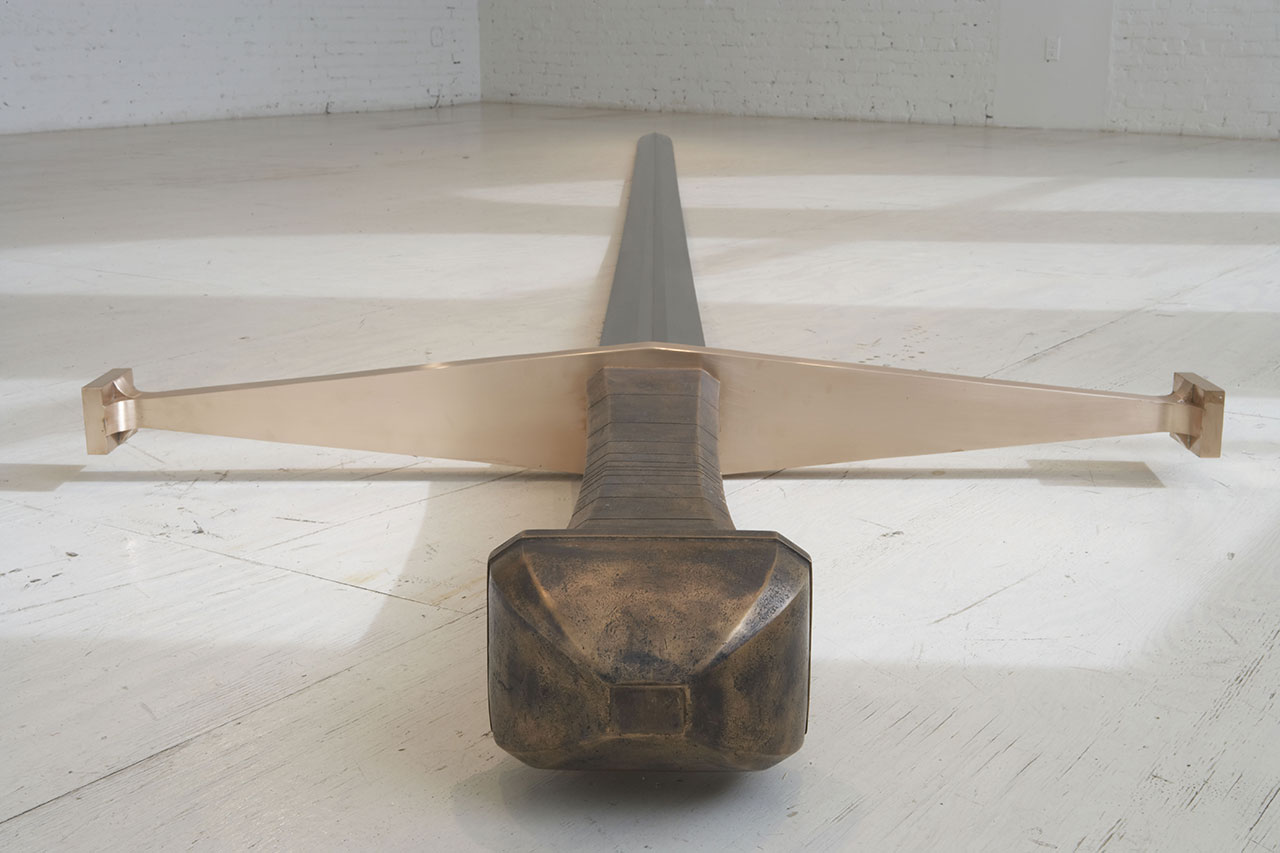
Kris Martin, Mandi XV, 2007. Steel, bronze. Installation view MOMA PS1. Photo by Matthew Septimus.
Artist's statement: This perfectly functional sword is too large for a man. Who is it for?
The act of omission, and by extension the artist’s encouragement to use your imagination, is also the key concept behind Martin’s sculpture “Altar”, a hollow replica of the multi-panelled, 15th century Ghent Altarpiece by Hubert and Jan Van Eyck originally installed in 2014 on the beach at Ostend and now standing in front of Ghent’s St. Bravo cathedral. By omitting the painted panels, Martin invites us to look at the surrounding world much like the Van Eyck brothers’ intention which was to reveal nature and mankind in all their detail. Martin’s fascination with the Ghent Altarpiece is also attested in “Eve and Adam” where he makes us look at the artwork’s eponymous figures in a new way by making them face away from each other.
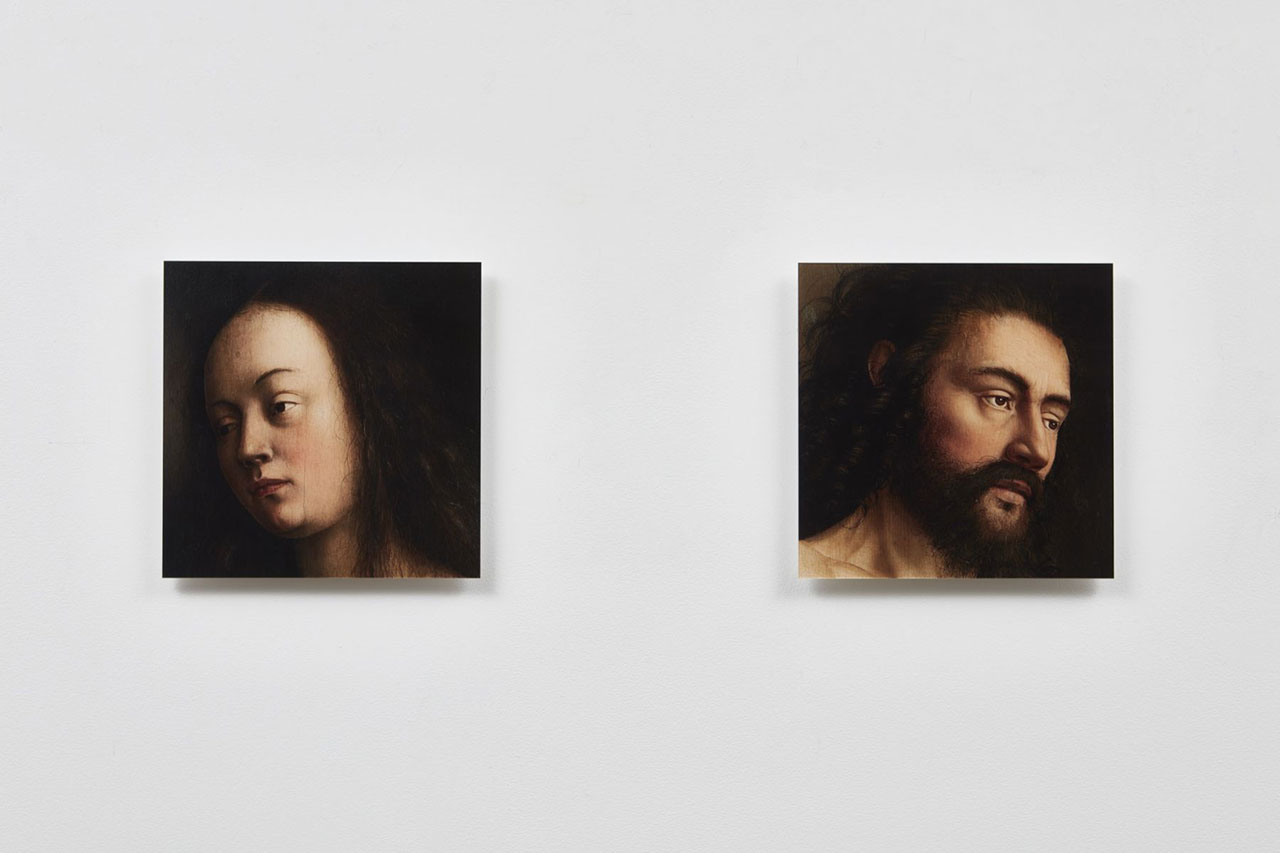
Kris Martin Eve & Adam, 2019. Courtesy the artist and Sean Kelly, New York. Photo by Jason Wyche, New York.
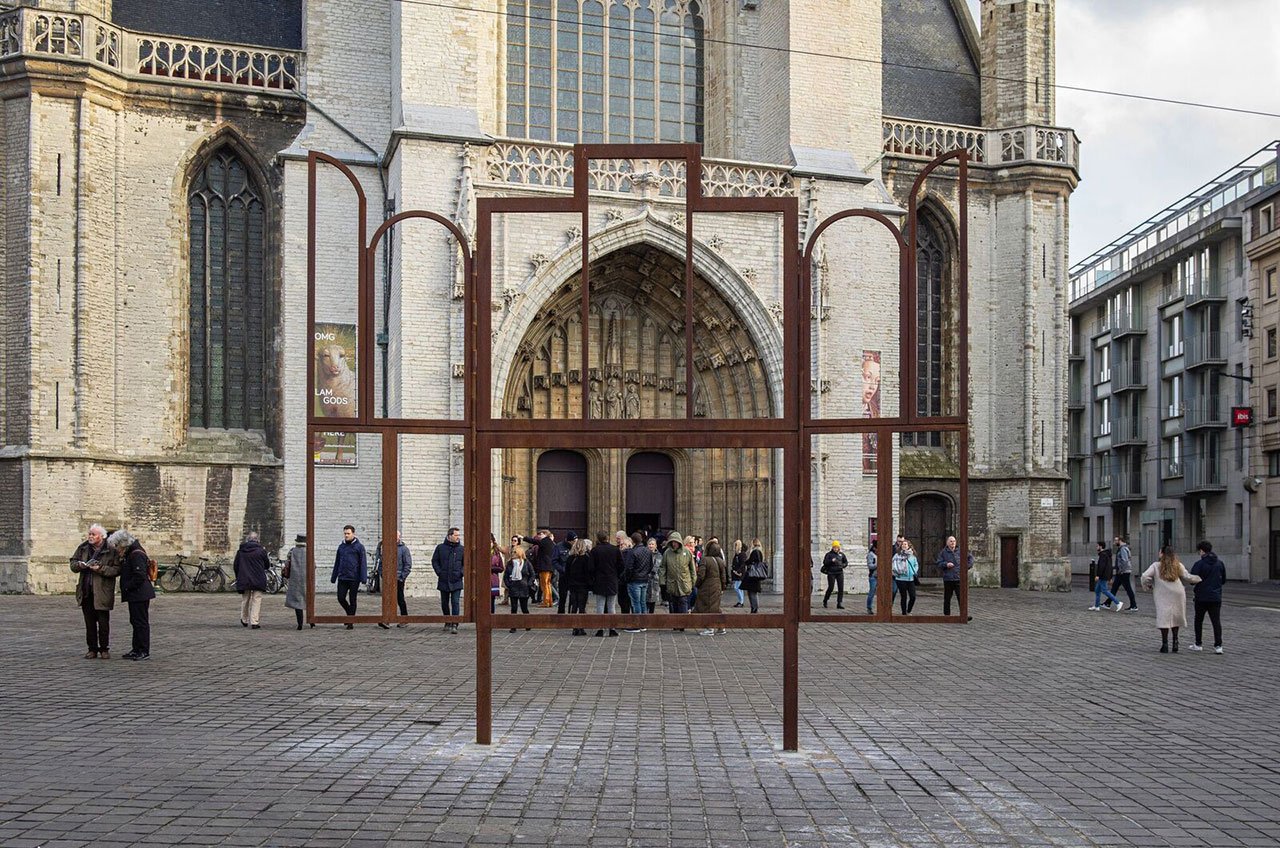
Kris Martin Altar, 2014. Installation at St Bavo’s Cathedral, Ghent.
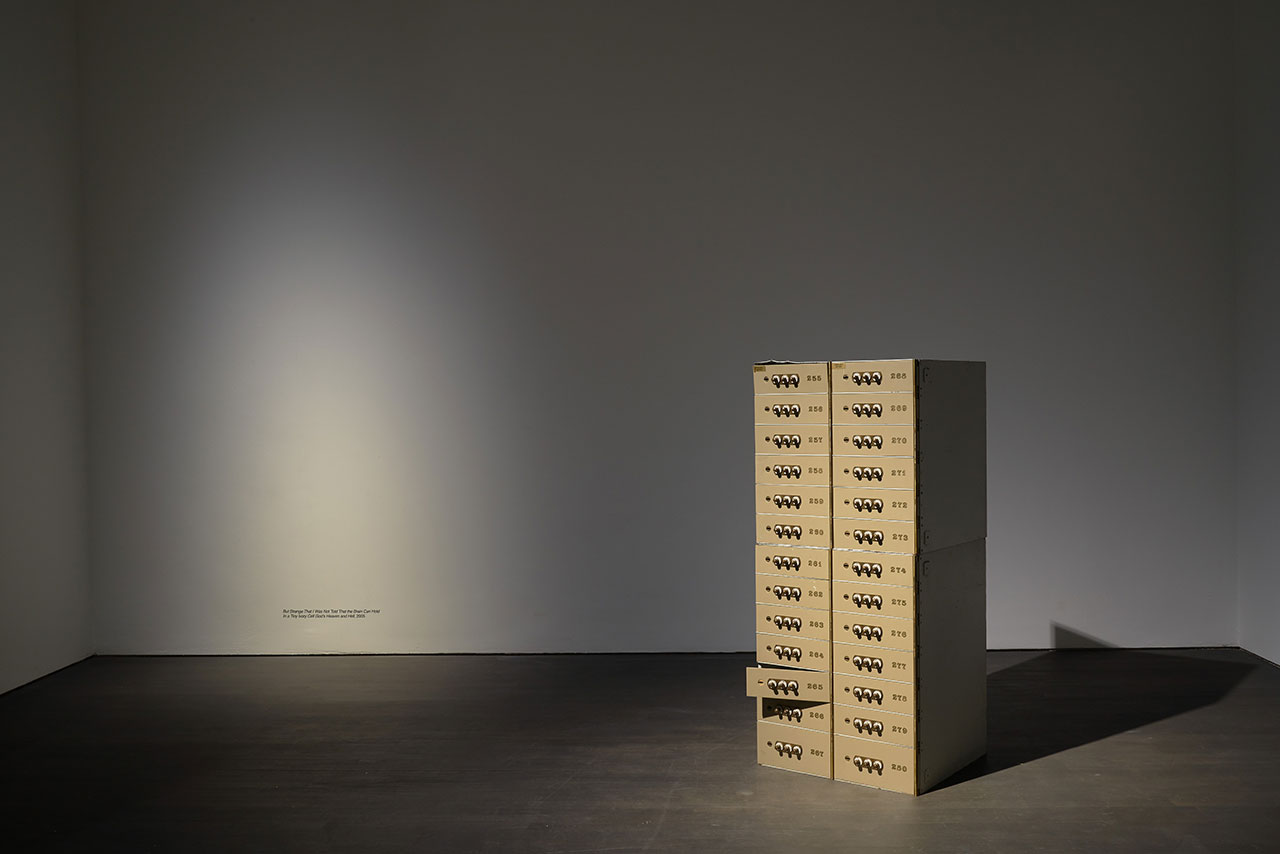
Installation view. Kris Martin, EXIT at S.M.A.K., Ghent, 2020. Photo by Dirk Pauwels.
Featured: But Strange That I Was Not Told That the Brain Can Hold In a Tiny Ivory Cell God’s Heaven and Hell, 2005.
Artist's statement: This quote is by Oscar Wilde and fits perfectly onto the buttons of this safe. The safe door with GOD is open.
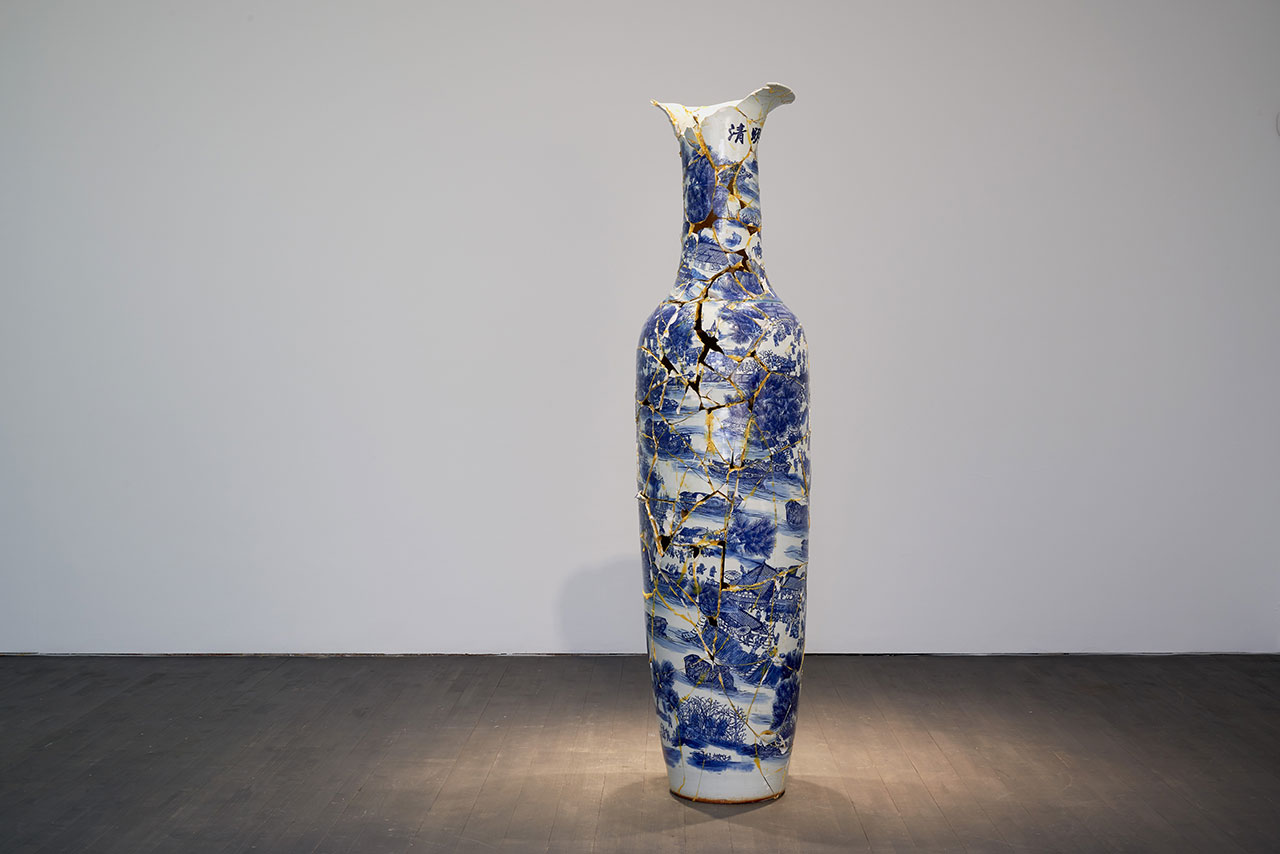
Installation view. Kris Martin, EXIT at S.M.A.K., Ghent, 2020. Photo by Dirk Pauwels.
Featured: Vase, 2005. Chinese porcelain, glue. Gaby and Wilhelm Schürmann Collection, Herzogenrath.
Artist's statement: I broke a Chinese vase and stuck it back together. Breaking and pasting as a metaphor for life. The vase reads in Chinese: The market and the people who go to the market.
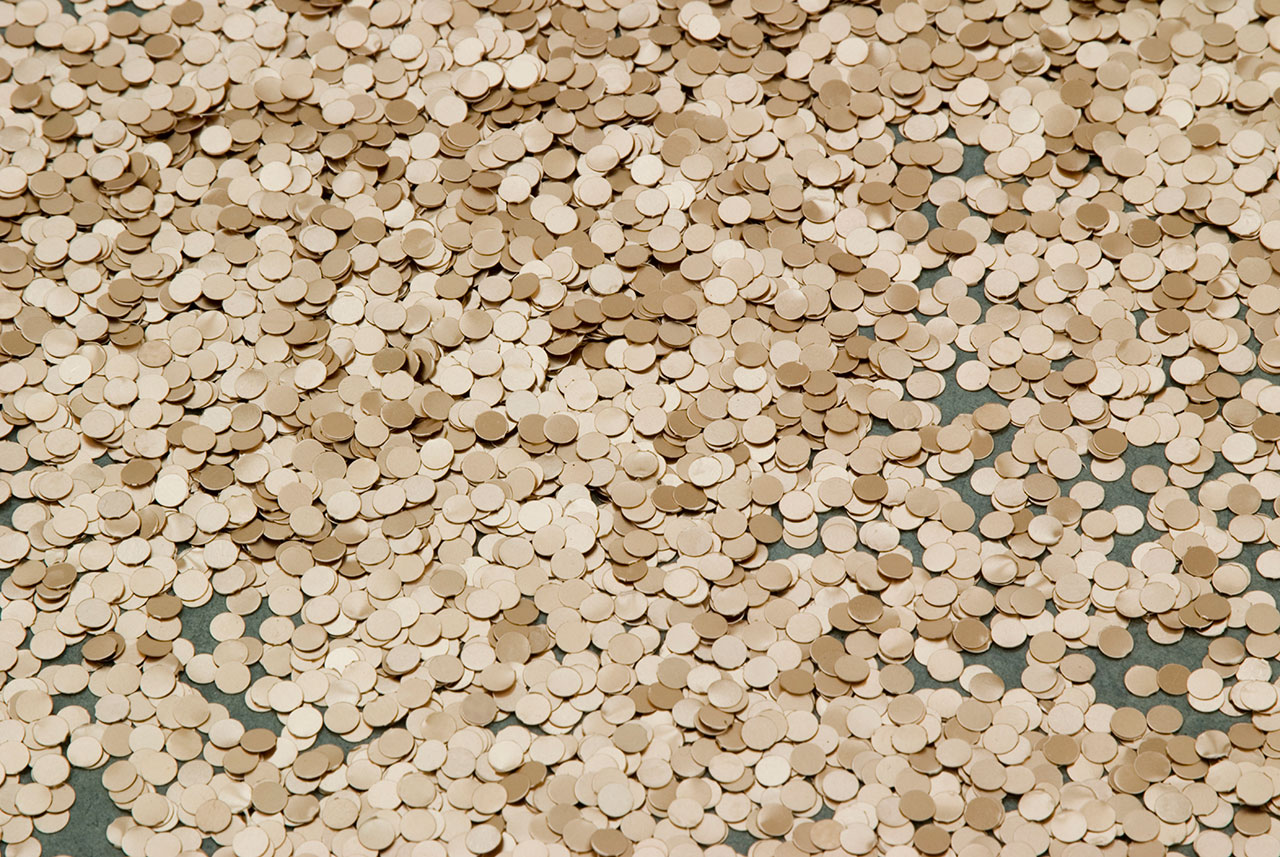
Kris Martin, Festum II, 2010. Courtesy Kris Martin and White Cube. Photo by Stephen White.
Artist's statement: Confetti is perishable, but this bronze version is eternal. We are mortal.
For his installation “Festum”, the Latin word for festival, thousands of tiny bronze discs cover the floor alluding to paper confetti that is traditionally thrown at weddings, parades or other moments of collective celebration. The artwork’s ephemeral, constantly shifting appearance is contradicted by the solidity and permanence of its material. In a nearby gallery, visitors encounter a marooned hot air balloon playfully titled “T.Y.F.F.S.H”—an acronym for ‘Thank you for flying Sies + Höke’ which alludes to the Düsseldorf’s Sies + Höke gallery where the installation was originally displayed in 2011—while the much, much smaller “Bee” perfectly encapsulates the wide range of the artist’s poetic gestures that extend all the way from the intimate to the grand.
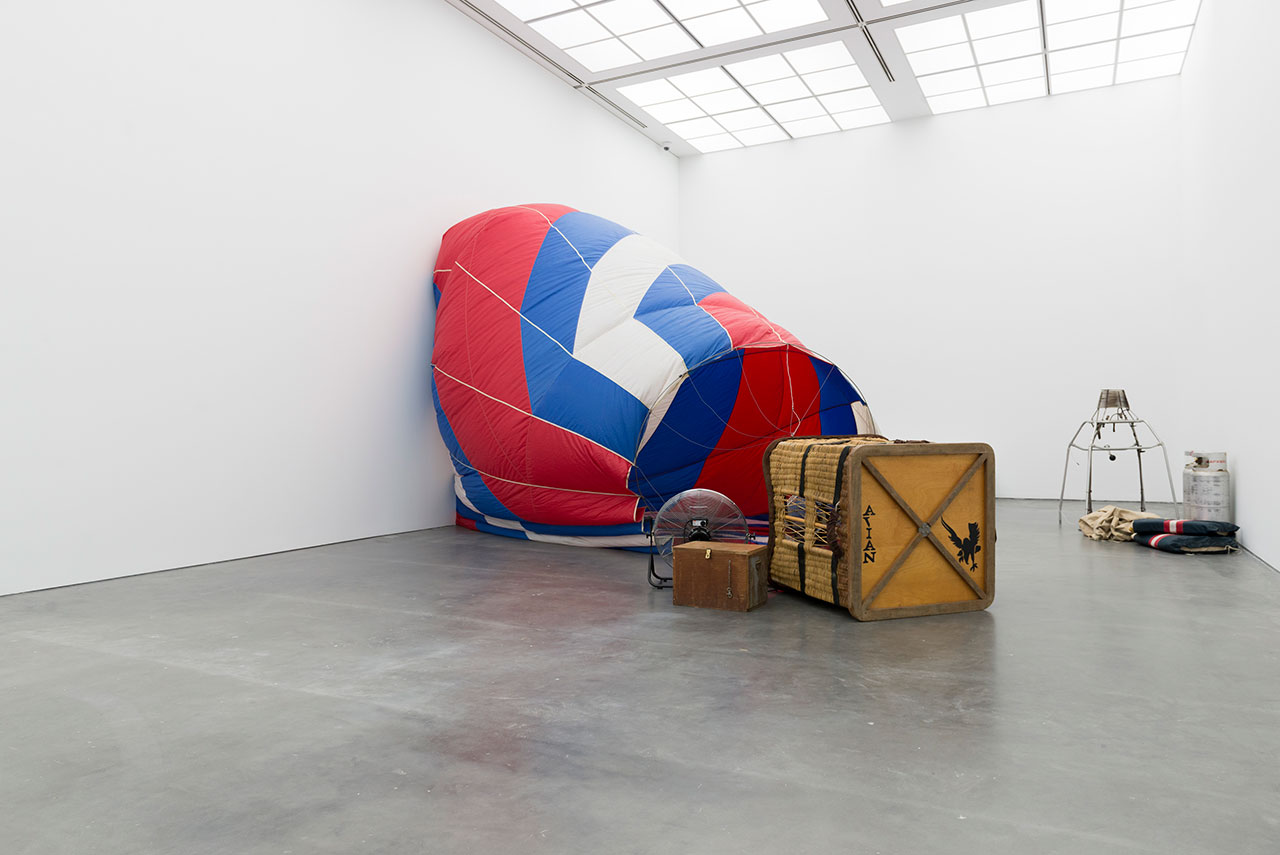
Kris Martin, T.Y.F.F.S.H., 2009. Hot air balloon, ventilators. Installation view MCA Chicago. Photo MCA Chicago.
Artist's statement: The dream of flying and drifting with the wind is captured in the museum.
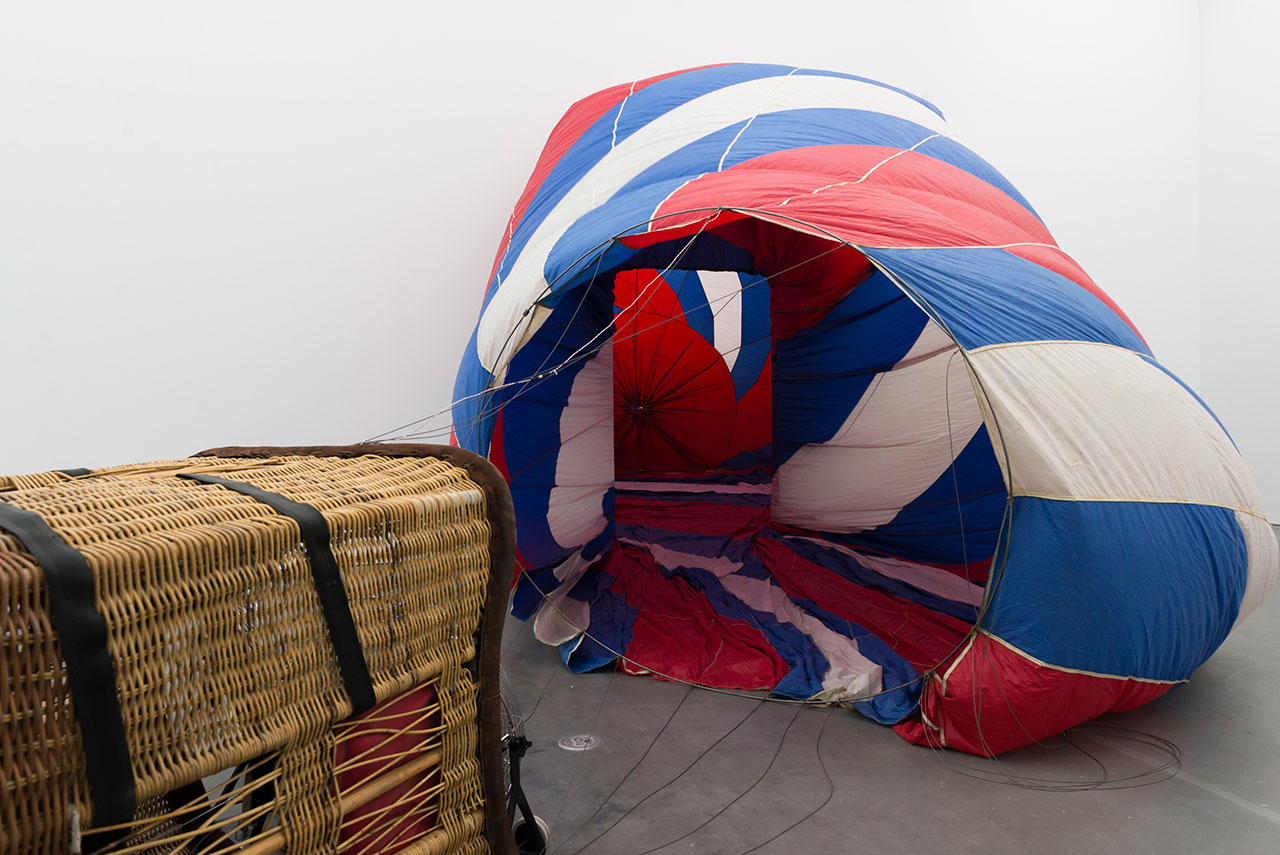
Kris Martin, T.Y.F.F.S.H., 2009. Hot air balloon, ventilators. Installation view MCA Chicago. Photo MCA Chicago.
Artist's statement: The dream of flying and drifting with the wind is captured in the museum.
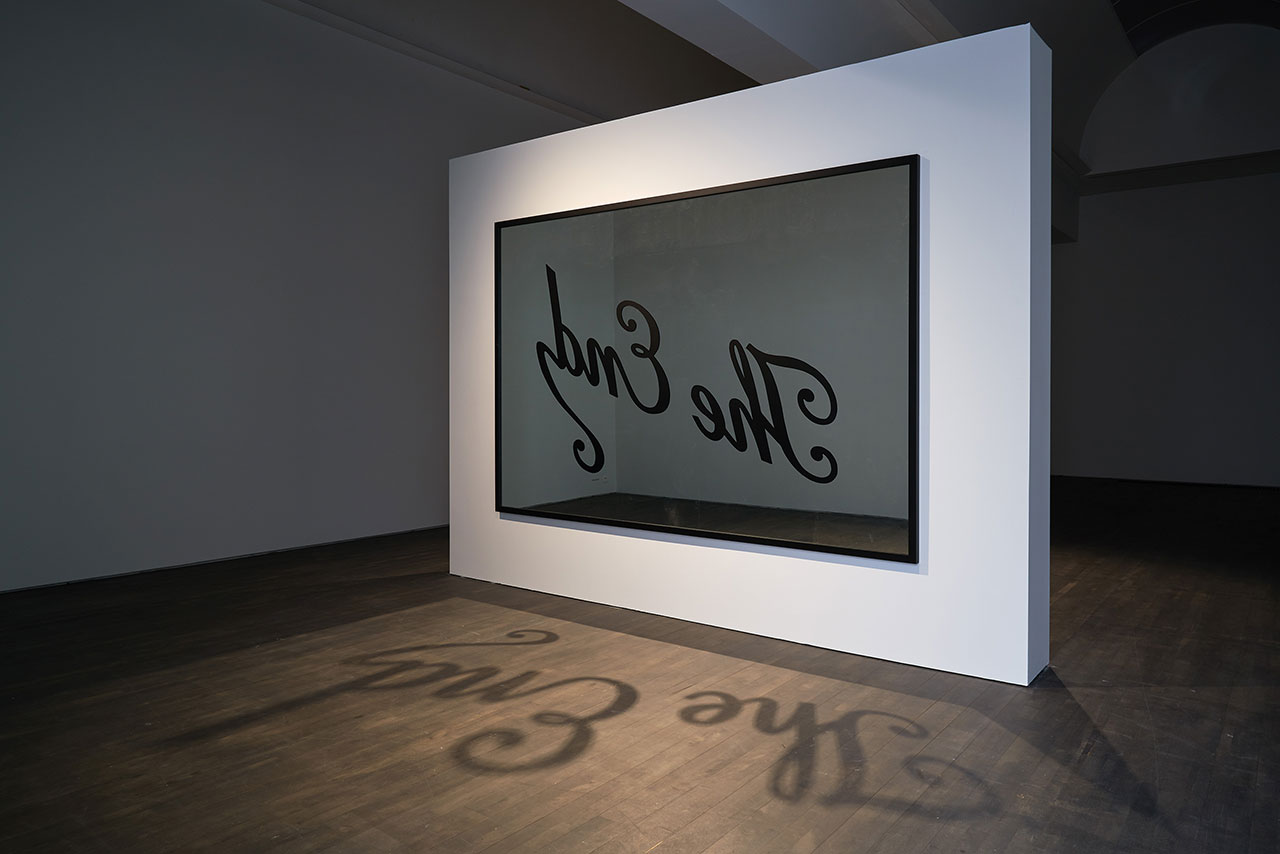
Installation view. Kris Martin, EXIT at S.M.A.K., Ghent, 2020. Photo by Dirk Pauwels.
Fearured: The End, 2006. Mixed media on mirror.
Artist's statement: We’re actors. Our reflections are our audience.


